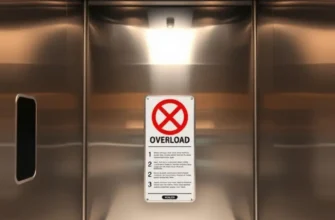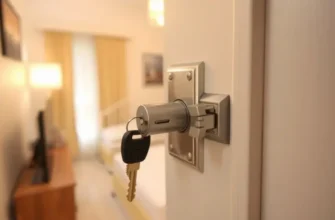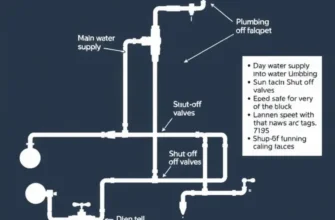Storms can strike unexpectedly, posing threats not just to homes but also to the peace of mind of renters across the U.S. As storm forecasts become more frequent and severe, understanding how to prepare your apartment for any inclement weather is crucial. Whether you’re new to apartment living or a seasoned renter, taking proactive steps to ensure your safety and security during a storm can greatly minimize stress and potential damage. From securing windows to creating an emergency kit, proper preparation allows you to focus on what matters most—staying safe. This guide provides practical, easy-to-follow tips tailor-made for renters, emphasizing not only the importance of physical safety but also the efficiency of maintenance solutions. Equip yourself with the knowledge to tackle storm preparations confidently, fostering a sense of security in your living space no matter what the weather brings.
Securing Your Space: Safety First

The safety of your apartment during severe weather conditions such as strong winds and flooding is paramount. Preparing your living space involves addressing several aspects to minimize risk and damage.
First, let’s explore window reinforcement. Windows are often the most vulnerable parts of an apartment. Consider using security film or storm shutters, both of which can provide additional protection against flying debris and help prevent breakage. Security film is a durable, clear film applied directly to the glass, bonding it together to reduce shattering. Storm shutters, on the other hand, are installed exteriorly and provide a robust barrier against wind and rain.
Another essential aspect of securing your space is managing loose items both inside and outside. Within your apartment, ensure heavy items such as bookshelves or televisions are anchored to the wall using brackets or straps. This will help prevent these items from tipping over and causing injury during high winds. Avoid placing fragile or valuable items near windows or on top of high shelves.
If your apartment includes a balcony, it’s crucial to secure furniture and other loose items. Strong winds can easily turn patio chairs and tables into projectiles. Consider bringing these items inside before a storm, or at the very least, tie them securely using rope or bungee cords. For more detailed advice, refer to our apartment balcony safety tips.
When it comes to flooding, if you are in a ground-level or basement unit, precautions are essential. Place important documents and valuable electronics on higher shelves away from potential water damage. It’s wise to invest in waterproof containers for items that must remain on the ground level. Rolling up rugs and tucking away loose textiles can also help mitigate flood damage.
Now, navigating landlord responsibilities is crucial. Contact your landlord to understand what protections are in place and what their responsibilities are in bad weather. Many landlords will have a protocol for storm shutters or building management during a storm. Confirm their policies on window reinforcement, sandbag provision for flood-prone areas, and their emergency contact details. Clear communication ensures you have a plan in place and the support of your building’s management.
Preparing your apartment involves both physical efforts and proactive communication with your landlord or building management. By strengthening windows, securing items, and understanding your landlord’s responsibilities, you enhance your safety and peace of mind during severe weather events. These steps not only protect your belongings but also contribute to a safer living environment for all residents. Following these practical tips will help safeguard your apartment against nature’s fury efficiently and effectively.
Emergency Preparedness: Create Your Kit

As a renter, preparing for emergencies means being ready for unexpected weather events or power outages. Creating a well-equipped emergency kit is essential for ensuring safety and security during such times. Here’s a guide to building an emergency kit tailored for renters.
Begin with the basics: food and water. Store non-perishable food items that do not require cooking. Canned goods, energy bars, and dried fruits are excellent choices. Ensure you have a manual can opener included. For water, follow the general rule of one gallon per person, per day, for at least three days. If space is limited, consider collapsible water containers.
Lighting can become an immediate concern during a power outage. Keep flashlights handy, preferably one per person, and stock up on extra batteries. Battery-powered lanterns can also illuminate larger spaces. While candles are an option, they pose a fire risk, particularly in small apartments.
Include a well-stocked first-aid kit. This should contain bandages, antiseptic wipes, gauze, and any prescribed medications you may need. Additionally, over-the-counter pain relievers, a thermometer, and insect repellent can be invaluable.
For communication, ensure you have a charged portable phone charger. Keep old smartphones as backups; these can often connect to Wi-Fi for emergency alerts and apps even if not activated. A battery-operated or hand-crank radio can keep you informed if the internet is down.
Consider your specific needs as a renter. Are there pet supplies you need to stockpile? Is there a plan in place for sheltering during a storm, especially if you don’t have a basement? Keep essential toiletries on hand, such as soap, feminine hygiene products, and sanitation bags.
Documents are vital during emergencies. Use a waterproof folder to store copies of important papers like your ID, lease agreement, medical records, and insurance policies. Digital versions should be stored in a secure cloud location or on an encrypted USB drive.
Assess your apartment’s layout to determine where you can safely store your kit. Closets, under beds, or dedicated cabinets can be viable options. Make sure all household members know about the kit’s location and contents.
Prepare a plan for different scenarios, such as evacuation. Know the nearest safe locations and have a designated meeting point. If driving is impossible, familiarize yourself with local public transport or community resources.
Stay ready by practicing your emergency plan regularly. This can reveal gaps in your preparations or areas where you may need additional resources.
For those interested in additional ways to enhance apartment safety, consider reviewing tips on safe apartment laundry habits for more comprehensive safety measures in your living space.
By taking these steps, ensuring your well-being during storms and other emergencies becomes more manageable and effective. Proper planning and the right resources can provide peace of mind, knowing you’re prepared for whatever may come your way.
Final words
As storms loom outside, effective preparation transforms potential chaos into calm. By securing your apartment and assembling a well-thought-out emergency kit, you’re not only protecting yourself but also enhancing your peace of mind. Remember, these actions reflect a commitment to safety and responsibility that every renter should embrace. Taking these small but vital steps ensures you can ride out any storm with confidence.









